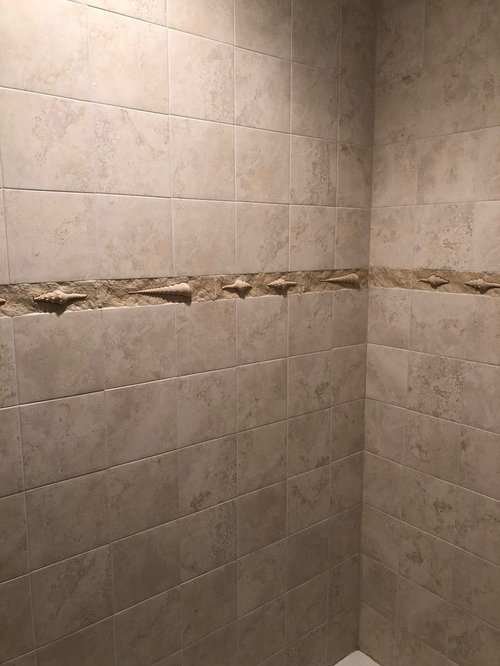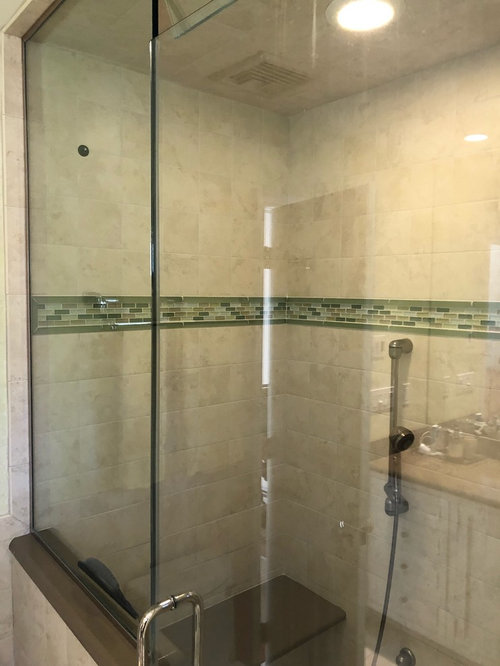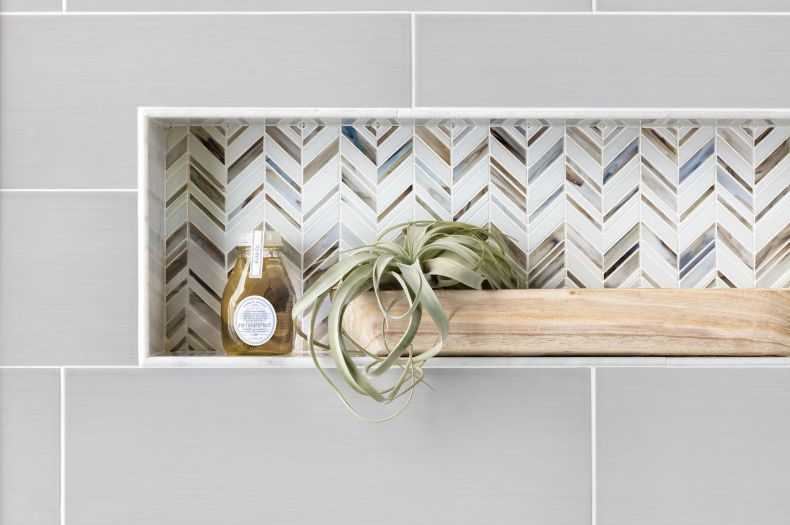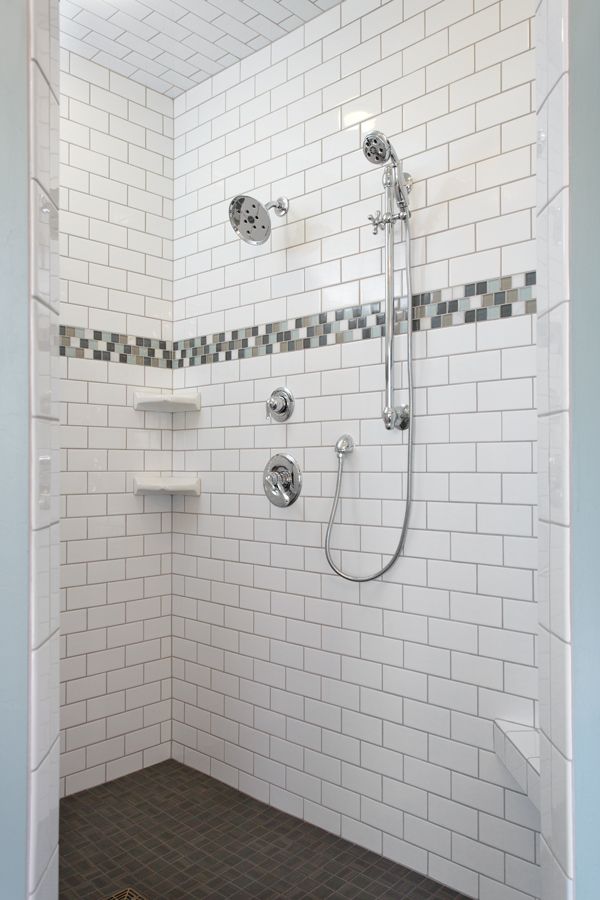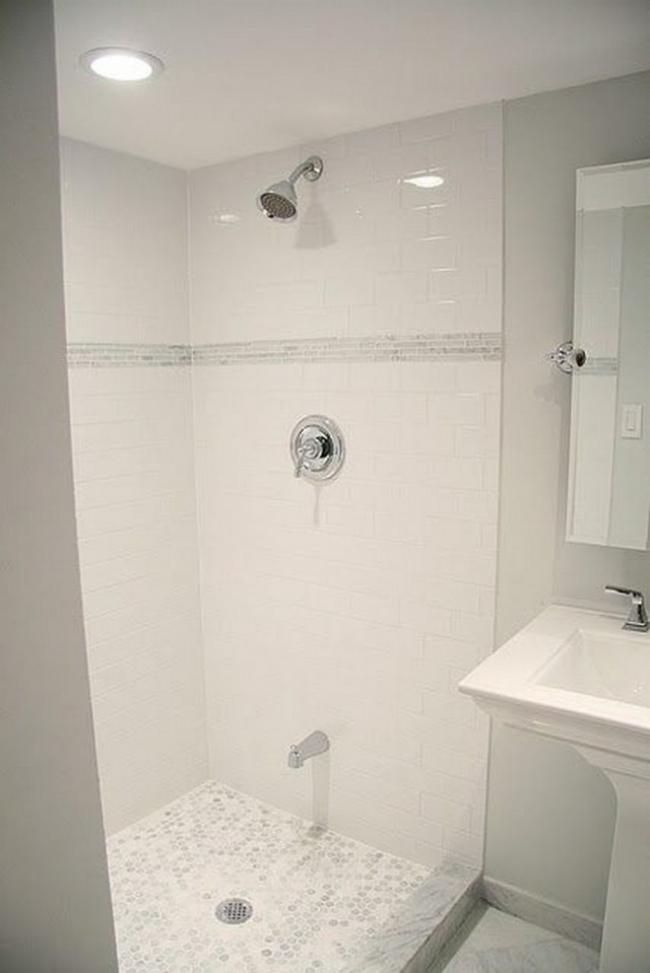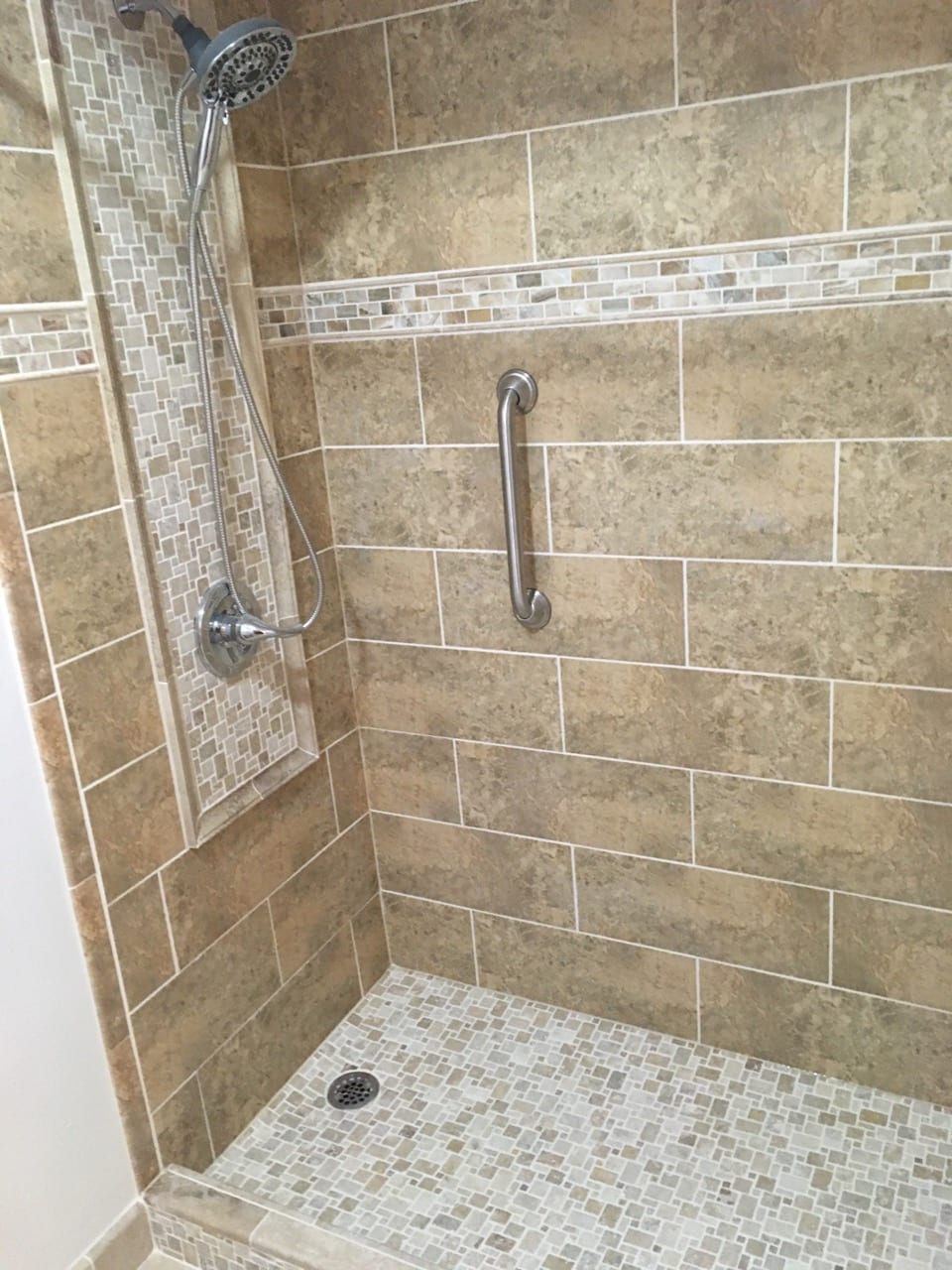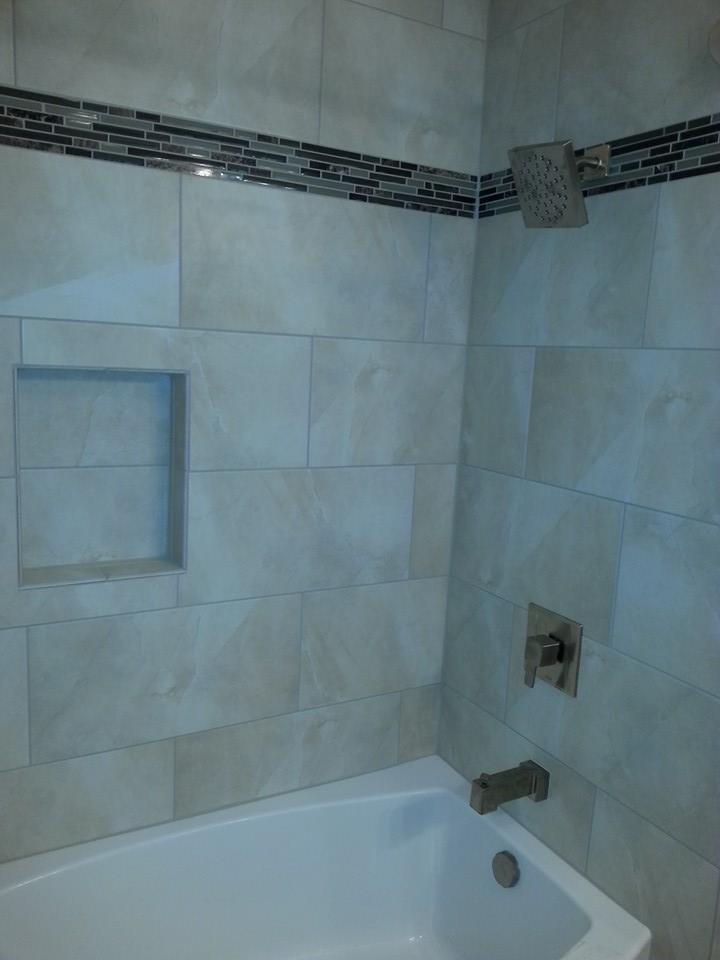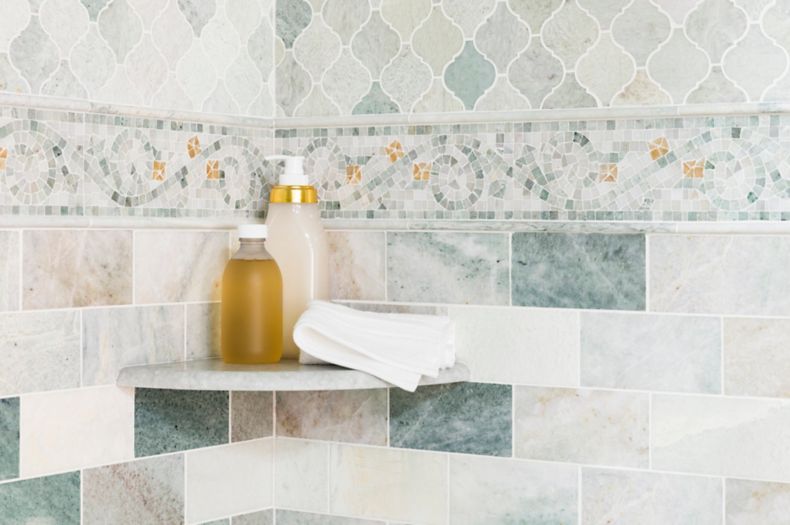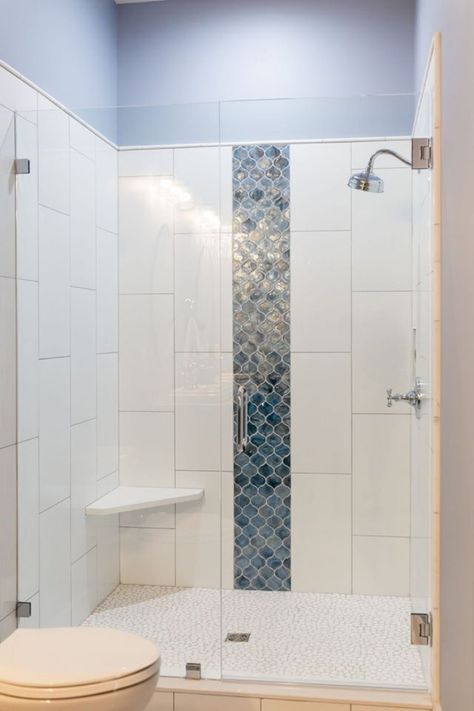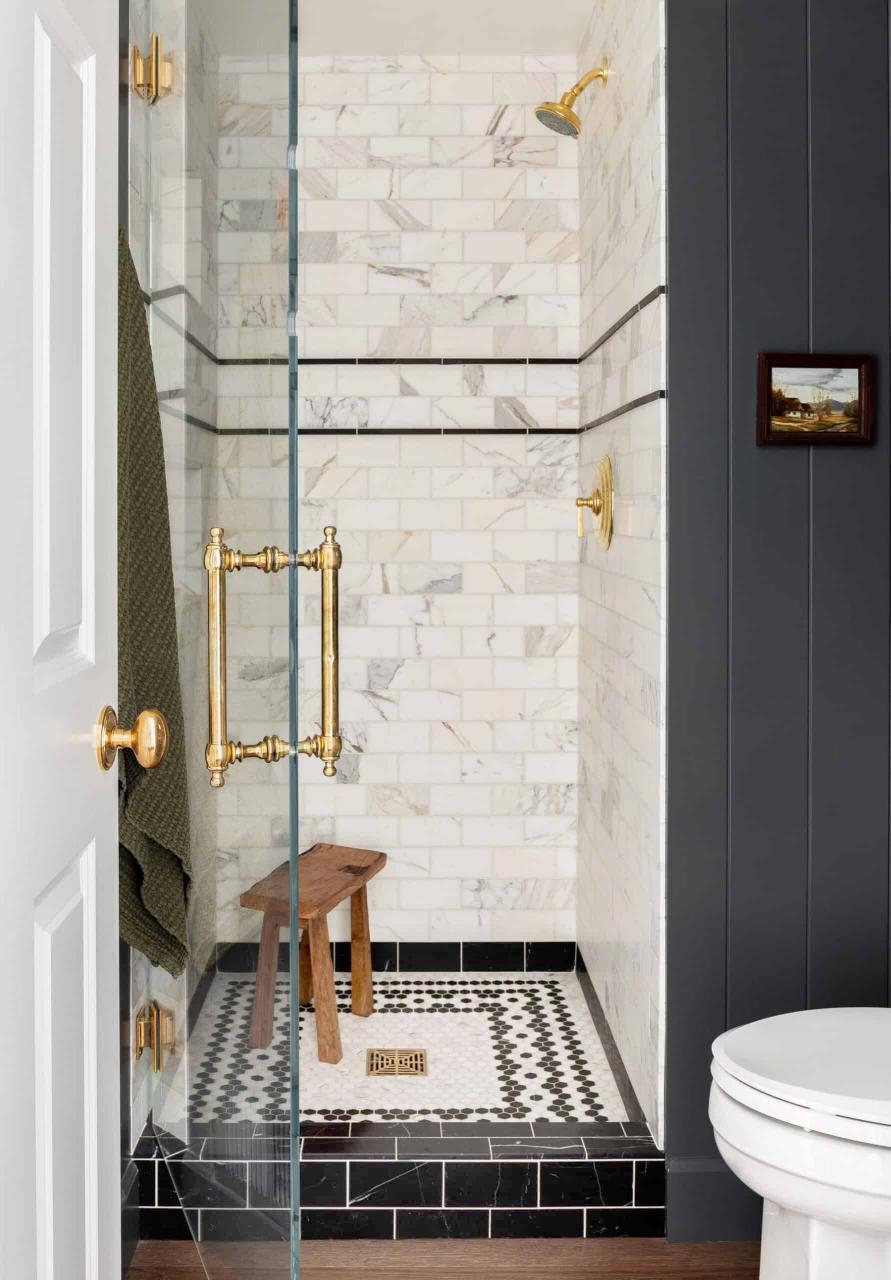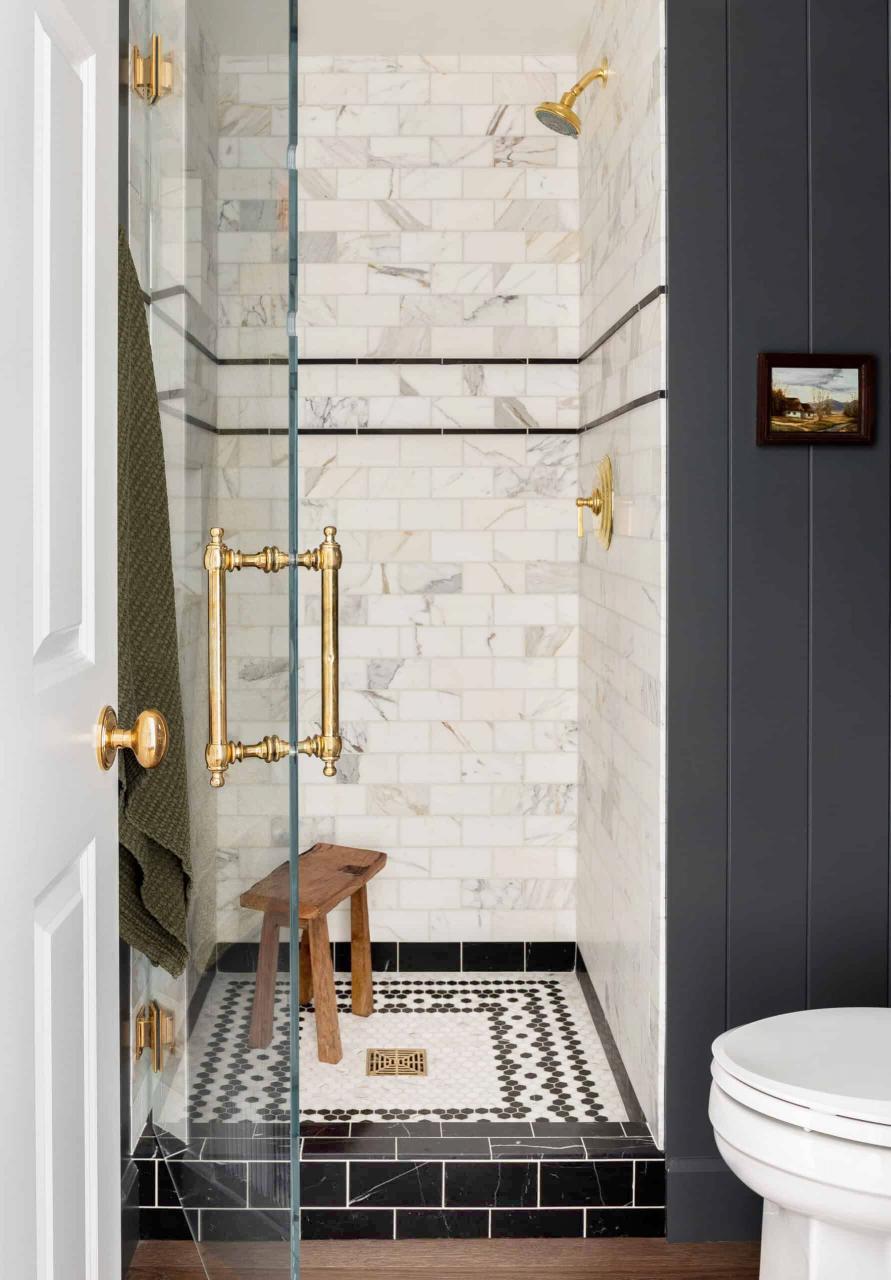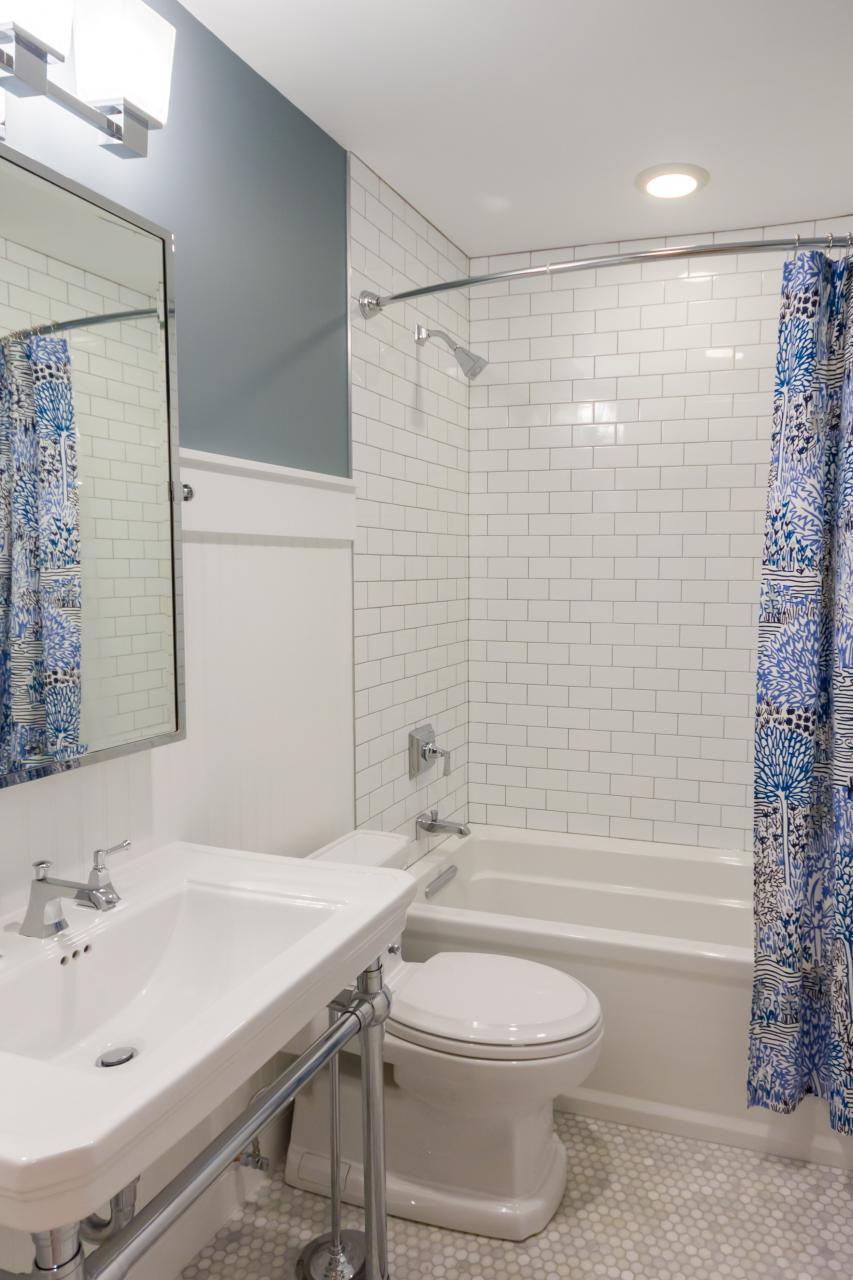Enhancing Your Bathroom Décor with Tile Accent Strips
The right tile accent strips can add a touch of elegance and personality to your bathroom décor. Whether you’re looking to create a focal point, add visual interest, or tie together the overall design, tile accent strips are a versatile and stylish solution. Let’s see how tile accent strips can enhance your bathroom décor and provide you with endless design possibilities.
- Creating Focal Points: Tile accent strips can be used to create eye-catching focal points in your bathroom. They can be installed vertically or horizontally to draw attention to specific areas, such as the shower or bathtub surround. Choose a contrasting color or pattern to make the strip stand out and instantly elevate the visual appeal of the space.
- Adding Visual Interest: By incorporating tile accent strips, you can add visual interest to an otherwise plain bathroom design. Consider installing strips along the edge of a vanity mirror, on the backsplash, or even as a border around the entire bathroom. The strips can feature intricate patterns, geometric designs, or even mosaic tiles to create a stunning visual impact.
- Tying the Design Together: Tile accent strips can be used to tie together different elements in your bathroom design. For example, if you have a vanity countertop with a similar tile pattern, you can extend that pattern onto the walls with accent strips. This creates a cohesive and harmonious look that brings all the elements of your bathroom together.
- Enhancing Exposed Areas: In bathrooms with exposed plumbing or niches, tile accent strips can be used to enhance these areas. Install strips around the exposed pipes or along the edges of a niche to make them visually appealing and seamlessly integrate them into the overall design. This turns what could be considered eyesores into stylish design features.
- Customizing Shower Designs: Tile accent strips are particularly popular in shower designs. They can be used to create borders, vertical or horizontal stripes, or even intricate patterns within the shower enclosure. This customization allows you to personalize your shower design and make it truly unique to your taste and style.
- Playing with Colors and Textures: Tile accent strips provide an opportunity to play with different colors and textures in your bathroom. Choose tiles that complement the existing color scheme or opt for contrasting hues to create a bold statement. You can also experiment with different textures, such as glossy, matte, or textured tiles, to add depth and dimension to the space.
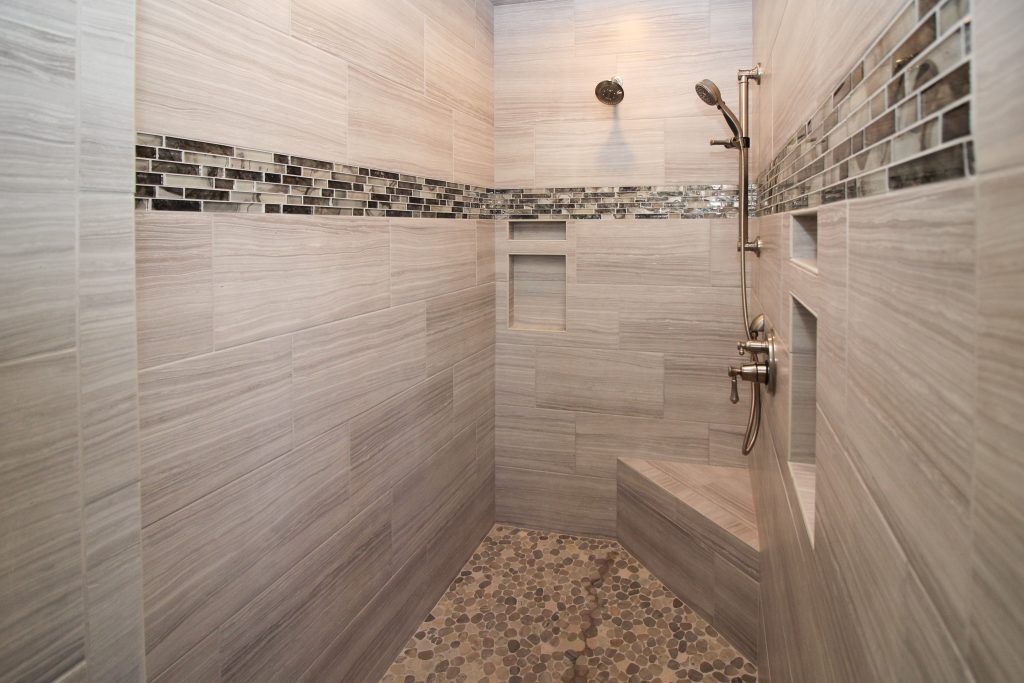
Transforming Your Bathroom with Stylish Tile Accent Strips
If you’re looking to transform your bathroom into a stylish and visually appealing space, consider incorporating tile accent strips into your design. These strips offer a simple yet effective way to add personality and charm to your bathroom. Let’s see how tile accent strips can transform your bathroom and elevate its overall aesthetic.
Elevating the Shower Area: The shower area is often the focal point of a bathroom, and tile accent strips can instantly elevate its design. Install a strip of accent tiles along the shower wall to create a striking feature. Choose a contrasting color or pattern to make the strip stand out and transform the shower into a visually stunning centerpiece.
Defining Spaces: In open-concept bathrooms or those with multiple functional areas, tile accent strips can be used to define different spaces. For example, install a strip of accent tiles between the vanity area and the bathtub to create a visual separation. This not only adds a stylish touch but also helps to organize the layout and flow of the bathroom.
Adding Texture and Depth: Tile accent strips can introduce texture and depth to your bathroom design. Choose tiles with raised patterns, such as mosaic or embossed tiles, to create a tactile experience. The textured surface adds visual interest and gives the bathroom a more dynamic and layered look.
Enhancing Backsplashes: Backsplashes are not only functional but also offer an opportunity to add a touch of style to your bathroom. By incorporating tile accent strips into the backsplash design, you can create a unique and eye-catching feature. Install the strips horizontally or vertically, or even in a herringbone pattern, to add visual intrigue and transform the backsplash into a focal point.
Personalizing Vanity Areas: Tile accent strips can be used to personalize the vanity area in your bathroom. Install strips of accent tiles along the edges of the vanity mirror or as a border around the vanity countertop. This adds a touch of sophistication and creates a cohesive look that ties the vanity area into the overall design of the bathroom.
Creating Geometric Patterns: Tile accent strips offer an opportunity to create geometric patterns that can transform the entire bathroom. Whether it’s a chevron, herringbone, or basketweave pattern, these strips allow you to experiment with different tile layouts and create a visually striking design. The geometric patterns add a contemporary and modern touch to the bathroom.
Creative Ways to Use Tile Accent Strips in Your Bathroom Design
If you’re looking to add a creative and unique touch to your bathroom design, consider incorporating tile accent strips. These versatile strips offer endless possibilities for customization and can be used in creative ways to enhance the overall aesthetic of your bathroom. We will explore some creative ways to use tile accent strips and inspire you to think outside the box in your bathroom design.
Vertical Accents: While horizontal accent strips are more commonly used, vertical accents can create a dramatic and visually striking effect. Install vertical strips of accent tiles along the shower wall, the vanity area, or even as a border around the entire bathroom. This unexpected orientation adds a touch of uniqueness and draws the eye upward, making the space feel taller and more expansive.
Zigzag Patterns: Instead of traditional straight lines, consider using tile accent strips to create zigzag patterns in your bathroom design. Install strips diagonally or in a chevron pattern to add a dynamic and playful element. This unconventional use of accent strips adds a sense of movement and energy to the space, making it visually captivating.
Mosaic Masterpieces: Tile accent strips don’t have to be limited to a single line or pattern. Get creative and use them to create mosaic masterpieces in your bathroom. Arrange small tiles in intricate patterns or motifs to create a work of art on your bathroom walls or floors. This unique and personalized touch adds a sense of craftsmanship and individuality to your bathroom design.
Colorful Contrasts: While neutral colors are often preferred in bathrooms, don’t be afraid to introduce bold and vibrant colors through tile accent strips. Choose accent tiles in contrasting hues to create a pop of color and add visual interest. Whether it’s a bright blue strip against a white backdrop or a rich red strip in a monochromatic bathroom, the colorful contrast creates a focal point and adds a sense of vibrancy.
Niche Accents: If your bathroom has niches or alcoves, consider using tile accent strips to highlight these areas. Install strips of accent tiles within the niche to create a distinct feature and draw attention to the space. This adds depth and dimension to the bathroom and turns the niche into a functional and visually appealing element.
Patterned Borders: Instead of using tile accent strips as a single line, consider using them to create patterned borders in your bathroom design. Install strips of accent tiles around the perimeter of the room, along the top or bottom of the walls, or even as a border around the vanity mirror. This adds a touch of sophistication and frames the space, giving it a finished and polished look.
Choosing the Right Tile Accent Strip for Your Bathroom
When it comes to incorporating tile accent strips in your bathroom, choosing the right ones can make all the difference in the overall design. The selection of tile type, color, pattern, and size can greatly impact the aesthetic and style of your bathroom. Here are some important considerations to help you choose the right tile accent strip for your bathroom.
Tile Type: The type of tile you choose for your accent strip will depend on the overall style and theme of your bathroom. Ceramic and porcelain tiles are popular choices due to their durability and wide range of designs. Glass tiles offer a sleek and modern look, while natural stone tiles, such as marble or travertine, add a touch of luxury and elegance. Consider the characteristics of each tile type and choose one that best complements your desired aesthetic.
Color Palette: The color of your tile accent strip should complement the existing color palette in your bathroom. Consider the dominant colors in the space, such as the wall color, flooring, and fixtures, and choose a tile color that harmonizes with these elements. You can opt for a contrasting color to create a bold statement or choose a complementary shade for a more cohesive and balanced look.
Pattern and Design: Tile accent strips come in a variety of patterns and designs, and selecting the right one can enhance the overall style of your bathroom. Consider the overall theme and aesthetic you want to achieve. For a classic and timeless look, opt for simple and elegant patterns like subway or Herringbone. If you prefer a more intricate and decorative style, mosaic or geometric patterns can add visual interest and create a focal point. Choose a pattern and design that aligns with your taste and complements the overall design of your bathroom.
Size and Proportion: The size and proportion of the tile accent strip should be carefully considered to ensure it fits harmoniously within your bathroom design. If you have a small bathroom, choosing a narrow strip can create the illusion of more space. In larger bathrooms, wider strips can make a bolder statement. Consider the scale and proportion of your bathroom, as well as the surrounding tiles, and choose a size that balances well with the overall layout.
Tile Placement: The placement of your accent strip can also impact the overall design. Consider where you want to install the strip and how it will interact with other elements in your bathroom. For example, installing the strip horizontally along the shower wall can visually elongate the space, while vertically placed strips can create a sense of height. Experiment with different placements to find the one that best enhances your bathroom design.
Maintenance and Durability: It’s important to consider the maintenance and durability of the tile accent strip, especially in high-moisture areas like the bathroom. Ensure that the tile is water-resistant and easy to clean. Porcelain and ceramic tiles are popular choices for bathrooms due to their durability and low-maintenance properties. Consider the long-term upkeep and choose a tile that will withstand the demands of a bathroom environment.
Personal Style: Ultimately, your style and preference should guide your decision when choosing a tile accent strip. Consider your taste, whether it’s a preference for bold and vibrant colors or a more subdued and neutral palette. Choose a tile that speaks to your individuality and complements your style, ensuring that you’ll love the look of your bathroom for years to come.
DIY Tips for Installing Tile Accent Strips in Your Bathroom
Installing tile accent strips in your bathroom can be a rewarding and impactful DIY project that adds personality and style to your space. With the right tools, materials, and techniques, you can achieve professional-looking results and transform the look of your bathroom. Below are some DIY tips for installing tile accent strips and guide you through the process to ensure a successful and visually stunning outcome.
Gather the Necessary Tools and Materials: Before you begin, make sure you have all the necessary tools and materials for the project. This typically includes tiles for the accent strips, tile adhesive, grout, a notched trowel, tile spacers, a tile cutter, a level, and a tile saw if necessary. Ensure you have protective gear such as gloves and safety goggles to handle the materials safely.
Plan the Layout: Start by planning the layout of the accent strips in your bathroom. Use a pencil to mark the placement of the strips on the walls or floors, ensuring they are spaced evenly and align with the overall design. Consider the size and scale of the tiles to achieve a balanced and visually appealing layout.
Prepare the Surface: Proper surface preparation is crucial for a successful tile installation. Ensure the surfaces where the accent strips will be installed are clean, dry, and free of any debris. If necessary, use a primer to promote better adhesion of the tile adhesive.
Apply the Tile Adhesive: Using a notched trowel, apply a layer of tile adhesive to the area where the accent strips will be installed. Work in small sections to prevent the adhesive from drying out before the tiles are placed. Create even ridges in the adhesive to ensure proper adhesion of the tiles.
Install the Tiles: Carefully place the tiles for the accent strips onto the adhesive, following the layout you planned. Use tile spacers to maintain even spacing between the tiles and ensure a professional-looking finish. Use a level to check that the tiles are properly aligned and adjust as needed.
Cut Tiles to Fit: In some cases, you may need to cut tiles to fit the desired layout. Use a tile cutter or tile saw to make precise cuts according to the layout. Measure and mark the tiles before cutting to ensure accuracy.
Grout the Tiles: Once the adhesive has set and the tiles are in place, it’s time to grout the accent strips. Using a grout float, apply the grout over the tiles, working it into the spaces between the tiles. Wipe off excess grout with a damp sponge, being careful not to remove grout from the spaces between the tiles.
Finish and Seal: After the grout has dried, use a dry cloth to buff away any grout haze from the tiles. Once the grout is fully cured, consider applying a grout sealer to protect the grout from moisture and stains, ensuring the accent strips look their best for years to come.
Clean Up: As the final step, clean up any remaining grout residue and adhesive from the tiles and surrounding areas. A thorough cleaning will reveal the full beauty of the installed accent strips.
Enjoy Your Newly Enhanced Bathroom: Once the installation is complete, step back and admire your handiwork. Your DIY-installed tile accent strips have transformed your bathroom into a visually stunning space that reflects your style and creativity.
White Subway Tile Shower with Gray Accent Strip, Dark Gray Tile
Tile Accent Pieces – Ideas on Foter
Tile shower with inlaid accents – Bathroom Remodeling Remodeltoledo
Bathroom Remodeling and Ceramic Tile Experts
Accent Tile Finishing Pieces – The Tile Shop
Shower Wall Accent Strip ideas in 2024
Related Posts:
- Large Dark Grey Bathroom Tiles
- Pink And Black Bathroom Tile How To Decorate
- White Bathroom Tiles Large
- Bathroom Tiles Lahore
- Bathroom Tile Ideas Budget
- Large White Gloss Bathroom Tiles
- Pictures Bathroom Tile Design Ideas
- How To Clean Stains On Bathroom Tiles
- Cool Bathroom Tile Jobs
- Bathroom Tile Ideas And Designs
